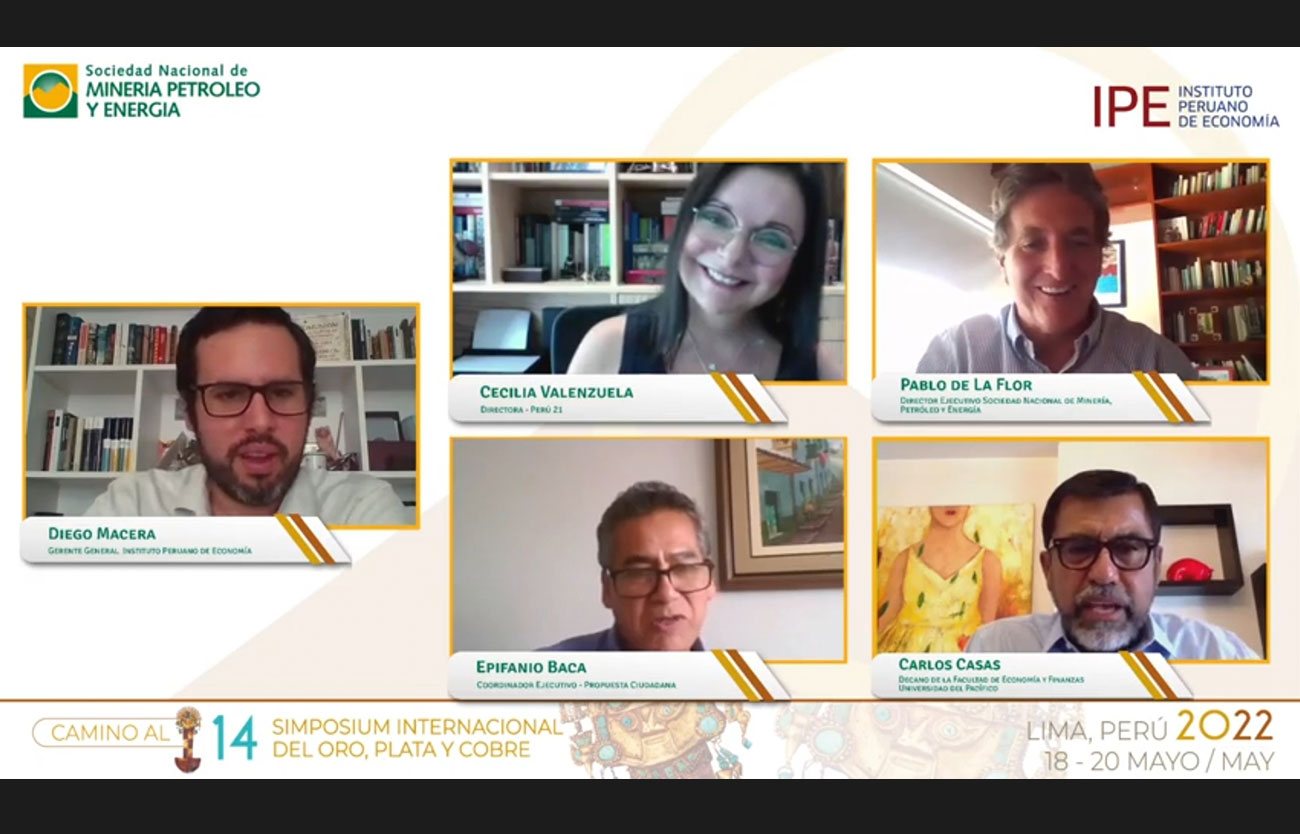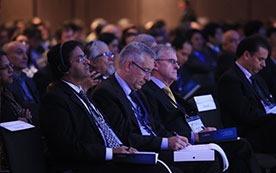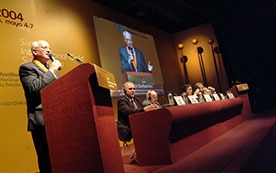
Meeting I: Mining’s Contribution to the National Economy
The projects in the mining portfolio involve more than 57 billion dollars in investments that, if implemented, would result in creating 2.3 million new direct and indirect jobs in the country.
This is according to the study ” Contribución de la Minería a la Economía Nacional”, prepared by the Instituto Peruano de Economía (IPE), which has been presented as part of the activities ” On the Road to the 14th Gold, Silver and Copper Symposium”, to be held in Lima in 2022.
“Mining is an important source of employment generation in Peru, not only because of the quality of jobs it creates directly, but above all, due to the employment promoted by the linkages with other economic activities. Currently, for every direct job in mining, 8 additional jobs are generated”, said Diego Macera, manager of IPE.
In this regard, he stated that by implementing the portfolio of more than 40 mining projects that our country currently has, the mining sector will be able to generate 2.3 million new direct and indirect jobs, which is equivalent to the same number of jobs that were lost last year due to the negative effects of the Covid-19 pandemic.
Economy driver
“Mining activity has had a positive impact on the national economy, as it contributes to the vitality of private investment in a decentralized manner, favoring the development of the country’s regions,” said Macera. In this regard, he emphasized that mining activity represents 10% of the national GDP and accounts for 16% of private investment.
Likewise, the mining sector -he stated- contributes significantly to the Peruvian State’s revenues under various concepts, both tax and non-tax, like Mining Royalties, the Special Mining Tax (IEM) and the Special Mining Lien (GEM, burdens not found in other sectors).
Fiscal Impact
Along these lines, IPE also calculated the fiscal potential of mining activity taking as a starting point the date of execution of the projects according to the portfolio of the Ministry of Energy and Mines. It analyzed two groups, the first made up of 15 mining projects that would be operational by 2025, and a second group of 27 mining operations that would enter by 2030.
Macera said that based on estimates of the value of mining production for these two groups, it was calculated that in the first case (15 projects) fiscal revenues from the mining sector would amount to approximately 43 billion soles in favor of the Peruvian State between 2025 and 2035; while the contribution of the remaining 27 projects would be around 96 billion soles in the period 2030 to 2040.
“At IPE we have calculated that the entry into operations of the two groups of the project portfolio would imply an extremely positive impact for the country’s development especially if we observe both the direct and indirect effects generated”, remarked Diego Macera.
The study reveals, he added, that in the first 10 years of operation of this set of mining projects a total of 109 billion soles in direct and indirect fiscal income would be generated. In the following ten years, if the second group of projects were to come into operation, the State would obtain 240 billion soles in additional revenues.
Effect on exports
According to figures from the Central Reserve Bank (BCR) in recent years, the mining sector is the one that has contributed most to the country’s exports, providing foreign currency for the stability of the macroeconomic accounts. Between 2010 and 2019, US$24,655 million in mining products were exported annually on average, representing an annual average of 58% of total exports.
The report of the Peruvian Institute of Economics, estimates that with the entry to operations of mining projects in the pipeline, mineral exports would increase by 66% over what was observed in 2017.
“Mining will be the great engine for the recovery and reactivation of the national economy. Political will is urgently needed by the authorities for moving forward this valuable portfolio of mining projects that will contribute to Peru’s development and will allow the State to obtain more tax revenues to invest in closing social gaps and defeating poverty,” Macera pointed out.
The first meeting was held on Wednesday, March 3 at 10:00 am, with the presentation of Estudio de la Contribución Minera a la economía Nacional study carried out by IPE, with the participation of Diego Macera and a research and academic panel.
Moderator
- Cecilia Valenzuela, Director of Perú21
Panelists
- Epifanio Baca, Executive Coordinator of Propuesta Ciudadana NGO
- Carlos Casas, Dean of School of Economics and Finance of Universidad del Pacifico
- Pablo de La Flor, Executive Director of National Society of Mining, Petroleum and Energy
Relive Meeting I here:


